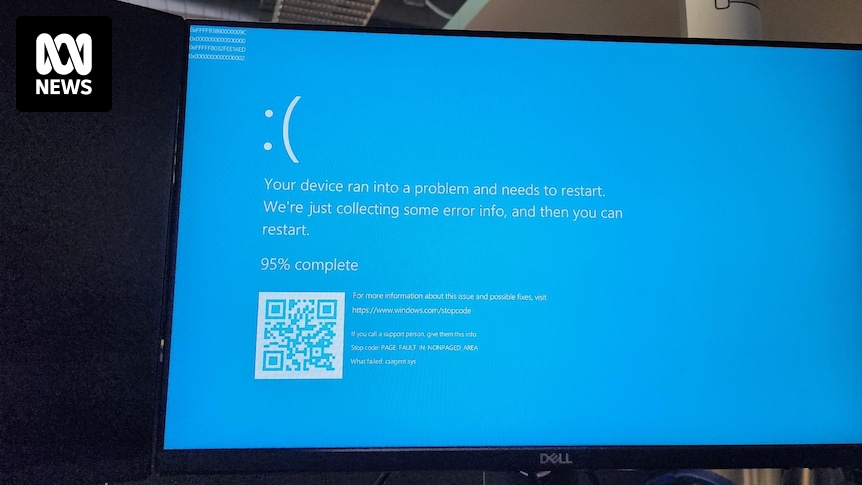All our servers and company laptops went down at pretty much the same time. Laptops have been bootlooping to blue screen of death. It’s all very exciting, personally, as someone not responsible for fixing it.
Apparently caused by a bad CrowdStrike update.
Edit: now being told we (who almost all generally work from home) need to come into the office Monday as they can only apply the fix in-person. We’ll see if that changes over the weekend…
Wow, I didn’t realize CrowdStrike was widespread enough to be a single point of failure for so much infrastructure. Lot of airports and hospitals offline.
The Federal Aviation Administration (FAA) imposed the global ground stop for airlines including United, Delta, American, and Frontier.
Flights grounded in the US.
I see a lot of hate ITT on kernel-level EDRs, which I wouldn’t say they deserve. Sure, for your own use, an AV is sufficient and you don’t need an EDR, but they make a world of difference. I work in cybersecurity doing Red Teamings, so my job is mostly about bypassing such solutions and making malware/actions within the network that avoids being detected by it as much as possible, and ever since EDRs started getting popular, my job got several leagues harder.
The advantage of EDRs in comparison to AVs is that they can catch 0-days. AV will just look for signatures, a known pieces or snippets of malware code. EDR, on the other hand, looks for sequences of actions a process does, by scanning memory, logs and hooking syscalls. So, if for example you would make an entirely custom program that allocates memory as Read-Write-Execute, then load a crypto dll, unencrypt something into such memory, and then call a thread spawn syscall to spawn a thread on another process that runs it, and EDR would correlate such actions and get suspicious, while for regular AV, the code would probably look ok. Some EDRs even watch network packets and can catch suspicious communication, such as port scanning, large data extraction, or C2 communication.
Sure, in an ideal world, you would have users that never run malware, and network that is impenetrable. But you still get at avarage few % of people running random binaries that came from phishing attempts, or around 50% people that fall for vishing attacks in your company. Having an EDR increases your chances to avoid such attack almost exponentionally, and I would say that the advantage it gives to EDRs that they are kernel-level is well worth it.
I’m not defending CrowdStrike, they did mess up to the point where I bet that the amount of damages they caused worldwide is nowhere near the amount damages all cyberattacks they prevented would cause in total. But hating on kernel-level EDRs in general isn’t warranted here.
Kernel-level anti-cheat, on the other hand, can go burn in hell, and I hope that something similar will eventually happen with one of them. Fuck kernel level anti-cheats.
>Make a kernel-level antivirus
>Make it proprietary
>Don’t test updates… for some reason??I mean I know it’s easy to be critical but this was my exact thought, how the hell didn’t they catch this in testing?
Completely justified reaction. A lot of the time tech companies and IT staff get shit for stuff that, in practice, can be really hard to detect before it happens. There are all kinds of issues that can arise in production that you just can’t test for.
But this… This has no justification. A issue this immediate, this widespread, would have instantly been caught with even the most basic of testing. The fact that it wasn’t raises massive questions about the safety and security of Crowdstrike’s internal processes.
A few years ago when my org got the ask to deploy the CS agent in linux production servers and I also saw it getting deployed in thousands of windows and mac desktops all across, the first thought that came to mind was “massive single point of failure and security threat”, as we were putting all the trust in a single relatively small company that will (has?) become the favorite target of all the bad actors across the planet. How long before it gets into trouble, either because if it’s own doing or due to others?
I guess that we now know
No bad actors did this, and security goes in fads. Crowdstrike is king right now, just as McAfee/Trellix was in the past. If you want to run around without edr/xdr software be my guest.
If you want to run around without edr/xdr software be my guest.
I don’t think anyone is saying that… But picking programs that your company has visibility into is a good idea. We use Wazuh. I get to control when updates are rolled out. It’s not a massive shit show when the vendor rolls out the update globally without sufficient internal testing. I can stagger the rollout as I see fit.
My work PC is affected. Nice!
Plot twist: you’re head of IT
Why do people run windows servers when Linux exists, it’s literally a no brainer.
Because all software runs from Linux right…
It could if more people just used Linux
Irrelevant but I keep reading “crowd strike” as “counter strike” and it’s really messing with me
Think of it as ClownStrike, they will be known as a bunch of clowns after this.
The amount of servers running Windows out there is depressing to me
I dunno, but doesn’t like a quarter of the internet kinda run on Azure?
I’ve had my PC shut down for updates three times now, while using it as a Jellyfin server from another room. And I’ve only been using it for this purpose for six months or so.
I can’t imagine running anything critical on it.
Windows server, the OS, runs differently from desktop windows. So if you’re using desktop windows and expecting it to run like a server, well, that’s on you. However, I ran windows server 2016 and then 2019 for quite a few years just doing general homelab stuff and it is really a pain compared to Linux which I switched to on my server about a year ago. Server stuff is just way easier on Linux in my experience.
This is why you create restore points if using windows.
Those things never worked for me… Problems always persisted or it failed to apply the restore point. This is from the XP and Windows 7 days, never bothered with those again. To Microsoft’s credit, both W7 and W10 were a lot more stable negating the need for it.
I can’t say about XP or 7 but they’ve definitely saved my bacon on Win10 before on my home system. And the company I work for has them automatically created and it made dealing with the problem much easier as there was a restore point right before the crowdstrike update. No messing around with the file system drivers needed.
I’d really recommend at least creating one at a state when your computer is working ok, it doesn’t hurt anything even if it doesn’t work for you for whatever reason. It’s just important to understand that it’s not a cure all, it’s only designed to help with certain issues (primarily botched updates and file system trouble).











